It’s one of the most amazing feats of engineering ever achieved and it powers the electric grid of 2 countries.
In this post, You’ll discover the ultimate list of facts about the Itaipu Dam, one of the most fascinating dams in the world!
1. What is the Itaipu Dam?
The Itaipu Dam is a large hydroelectric dam on the border of Brazil and Paraguay. It’s located on one of the biggest rivers in the world (the 7th biggest to be exact), the Paraná River. It powers the entire country of Paraguay, which is even able to sell back electricity to Brazil.
What makes the dam so special is its extreme efficiency and the fact that it’s a binational project, which shows the world that cooperation can lead to great results.

2. Where is the Itaipu Dam located?
The Itaipu Dam is located on the border of Brazil and Paraguay near the cities of Foz do Iguaçu, in Brazil, and Ciudad del Este in Paraguay. It can be found about 15 kilometers north of a bridge that connects the two cities called the “Friendship Bridge.”
This bridge opened in 1965 and its name alone proves the great relationship between not just the two cities, but the two countries as well, making an immense binational project as the Itaipu dam possible.

3. The Dam generates a lot of power
The Itaipu Dam is one of the most powerful dams in the world. It has a total capacity of 14 GW, spread over 20 generating units that can provide 700 MW each.
Each hydraulic design head measures 118 meters (387 ft) and to operate such a massive power plant, 2855 employees are working in it (updated in January 2020).
Remarkably, more employees are working on the Paraguayan side (1,563) than on the Brazilian side (1,292) of the Itaipu Dam.

4. The idea for a dam came a long time ago

In the 1960s, the discussion to create a binational dam on the border of Brazil and Paraguay was initiated. These talks resulted in the signing of the “Ata do Iguaçu” (Iguaçu Act) on July 22, 1996.
The Iguaçu Act made it possible for the two countries to do a study and determine how and when a dam could be built using the natural resources available to both countries in this area.
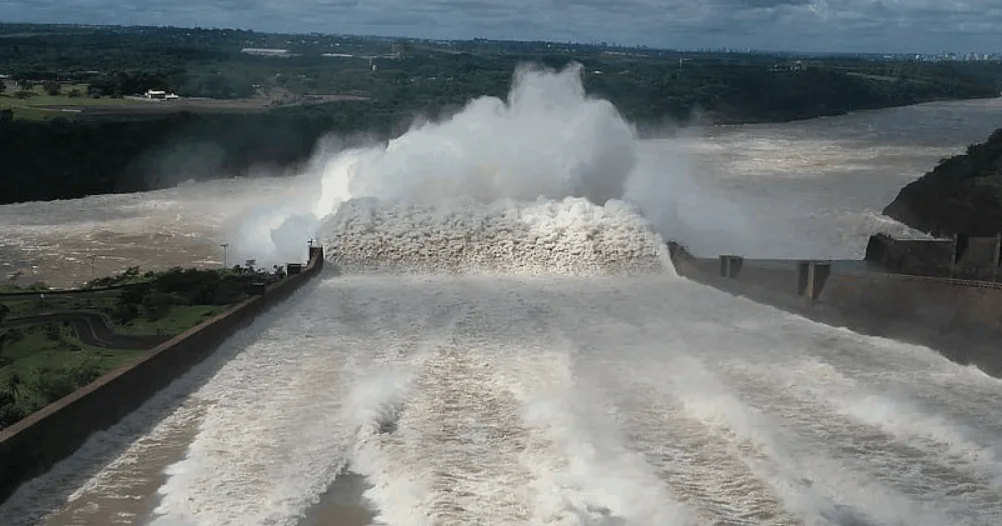
5. Negotiations took a long time
To say that the Itaipu Dam is a massive project is an understatement. It wasn’t until the early 1970s that studies had been finalized.
The most important day of the project came on April 26, 1973, when the Itaipu Treaty was signed. This was the legal document needed to engage in hydroelectric exploitation of the Paraná River by the two countries.
The Itaipu Binacional who would coordinate the construction and eventually run the Itaipu Dam was created on May 17, 1974.
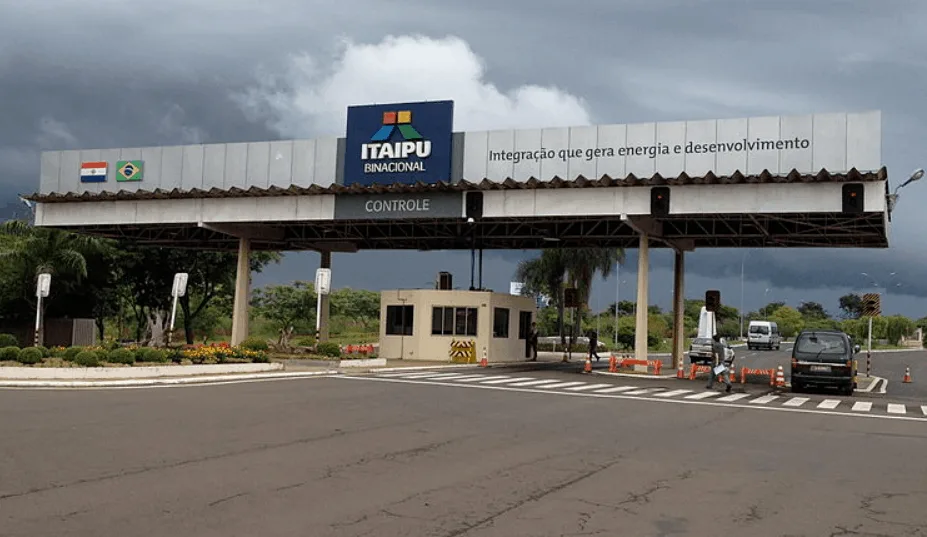
6. The construction was a massive undertaking
The consortium of an American company (IECO) and an Italian company (ELC) that was formed in 1970 after the viability studies were completed was eagerly waiting to get things rolling. The construction of the Itaipu Dam began in January 1971.
One of the most significant moments of the construction was the rerouting of the Paraná River. The 7th largest river in the world had its course changed on October 14, 1978. This allowed the riverbed to dry and a large section of the dam to be built.

7. Argentina got involved as well
Even though the Itaipu Dam isn’t located on Argentinian soil, the Paraná River runs through the country and even forms the River de la Plata that empties in the Atlantic Ocean near the city of Buenos Aires.
This reason enough for Argentina to contest the construction of the dam, so negotiations to reach an agreement were needed.
On October 19, 1979, a diplomatic settlement between Argentina, Brazil, and Paraguay called the Acordo Tripartite was reached. In it, the allowed river levels and how much they could change were established.

8. The first electricity was produced
Another important moment in the construction of the Itaipu Dam happened on October 13, 1982. This is the day that the huge reservoir was formed as the side canal’s gates were being closed.
Apparently, the weather gods were favorable as this was a period of heavy rain that sped up the filling of the reservoir. The water rose about 100 meters and reached the gates of the spillway on October 27.
Less than a year and a half later, on May 5, 1984, after over 13 years of construction the first generation unit was started and the first electricity was produced at the Itaipu Dam.

9. The power plant was only completed in the 2000s
After the initial generation units were made operational in 1984, 2 or 3 were integrated every single year. This means that the initial 18 generating units were ready and started running in the year 1991.
The last 2 generating units were only integrated in September 2006 and March 2007. This finalized the 20 units, completed the plant, and brought the total capacity to 14 GW.

10. A huge blackout occurred in 2009
While having such a huge source of electricity is a huge benefit for both countries, if something goes wrong, the consequences are equally huge.
On November 10, 2009, three high-voltage transmission lines were destroyed by a storm, effectively damaging the connection to the entire electricity grid that the plant powers.
Result: The entire country of Paraguay was out of electricity for at least 15 minutes and the enormous cities of Sao Paulo and Rio de Janeiro were completely in the dark for more than 2 hours.
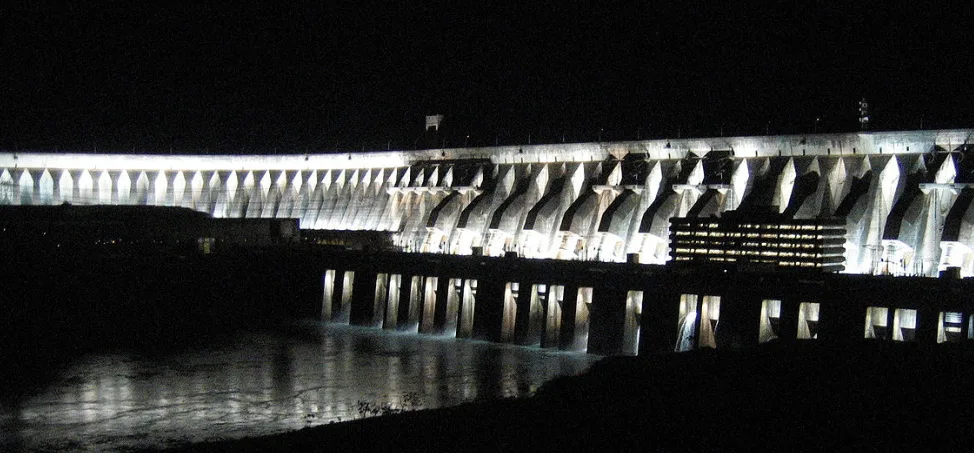
11. One of the largest waterfalls in the world by volume disappeared
For the Itaipu Dam to function, a huge artificial lake needed to be created. Unfortunately, this literally destroyed one of nature’s most amazing wonders, the Guaíra Falls.
The waterfalls consisted of a total of 18 waterfalls in 7 groups and were often referred to as “The Seven Falls” or the “Sete Quedas.”
The flow rate of the Guaíra Falls varied widely, ranging from 13,000 cubic meters (470,000 cu ft) per second to 50,000 cubic meters (1,750,000 cu ft) per second. Regardless, they were one of the largest waterfalls in the world by volume.
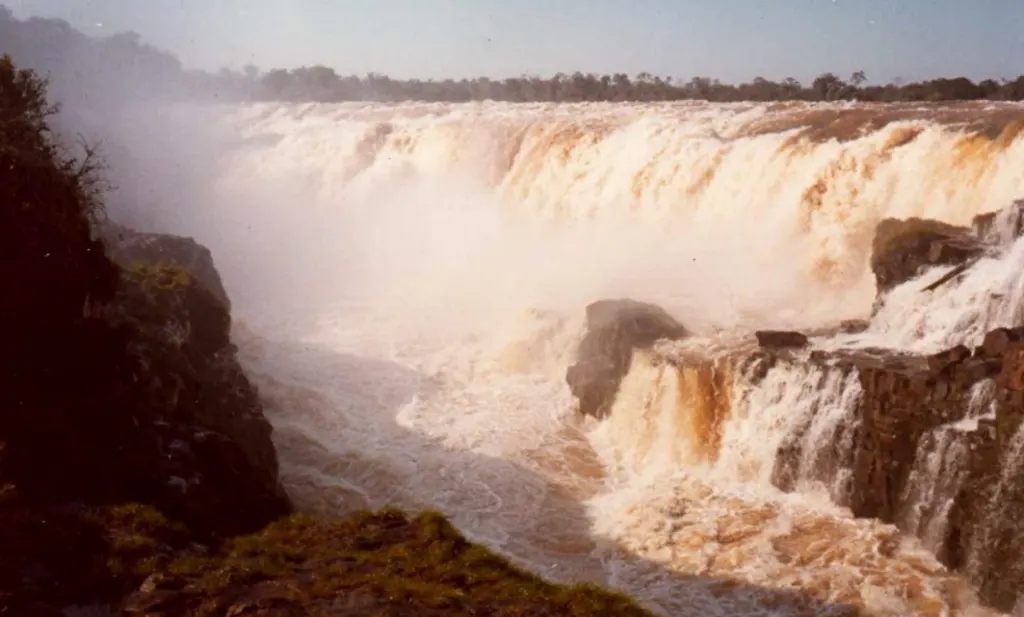
12. Thousands of people were displaced
To create the huge artificial lake alongside the Paraná River, over 10,000 families living there had to be displaced.
13. 30 fish species forcibly found a new home as well
The Waterfalls that suddenly disappeared formed a huge natural barrier to the species of fish living above and the ones living below.
Apart from the human sacrifice of having to move elsewhere because of the construction of the Itaipu Dam, the fish also had to move to a place that has been recognized as a different ecoregion.

14. The Itaipu Dam is very efficient
Even though the installed capacity of the Itaipu Dam isn’t the highest of all hydroelectric dams in the world, it produces the most energy making it one of the most efficient dams in the world.
The Three Gorges Dam is the closest competitor and produces 98.8 GW and has a total capacity of 22,500 MW. The Itaipu Dam, on the other hand, has a total capacity of 14,000 MW and produces 103.1 GW, which was a new world record back in 2016.

More interesting facts about the Itaipu Dam
To justify why the American Organization of Civil Engineers chose the Itaipu Dam as one of the 7 wonders of the modern world, here are some quick facts that will make you dazzle:
15. The production of the Itaipu Dam far exceeds the load needed to provide the entire country of Paraguay with electricity. This makes it possible for Paraguay to earn money by directly selling electricity back to Brazil which uses it to power the Rio de Janeiro and Sao Paulo areas.
16. The construction cost of the dam was about USD 19.6 billion, which is the equivalent of nearly USD 50 billion today.
17. The height of the roof of the dam is 196 meters (643 ft) and the total length of the dam is 7,235 meters (23,737 ft).
18. The total volume of the Itaipu Dam is 12.3 million cubic meters and the spillway, which has a total length of 483 meters (1,585 ft), has a total capacity of 62,200 cubic meters (2.2 million cubic ft) per second.
19. The spillways are divided into 14 segments and their average flow is equivalent to 40 times that of the nearby Iguaçu Falls.
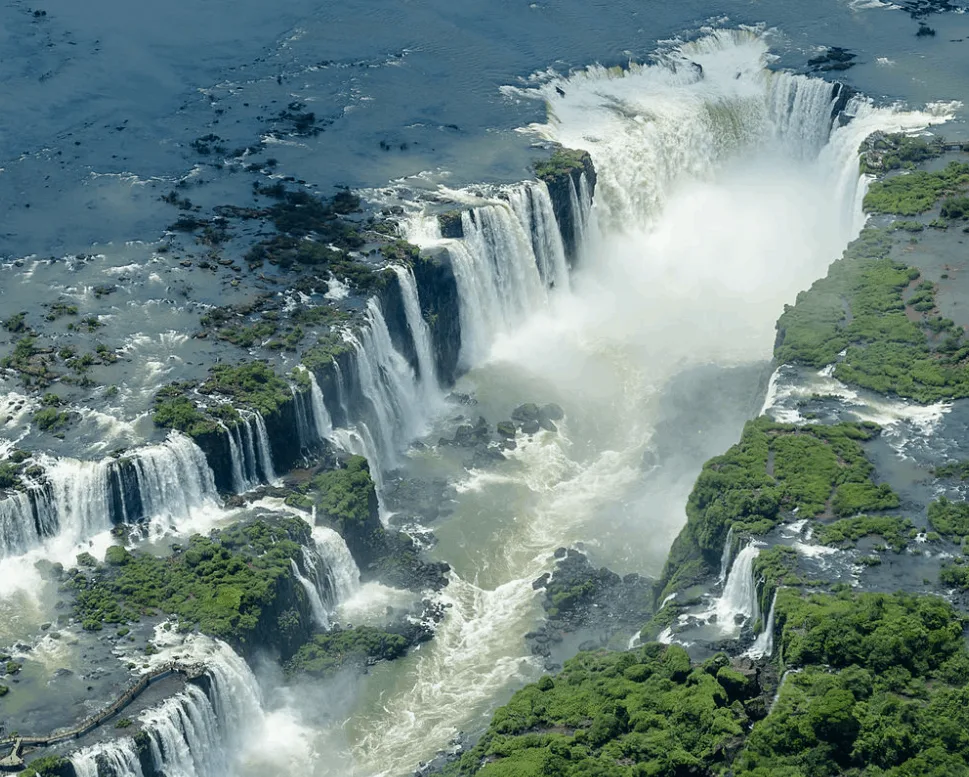
20. The Itaipu reservoir has a total capacity of 29 cubic kilometers and a catchment area of 1,350,000 square kilometers (520,000 sq mi). The surface area of the reservoir is 1,350 square kilometers (520 sq mi).
21. Because the Itaipu reservoir is so efficient when it comes to producing energy concerning the total flooded area, electricity produced by the Itaipu Dam is 55% cheaper than energy produced with other dams in the area.
22. Apart from changing the course of the 7th biggest river in the world, 50 million tons of earth and rock were moved as well.
23. The amount of concrete used for the construction of the Itaipu Dam would be enough to build 220 football stadiums the size of the “Estádio do Maracanã” in Rio de Janeiro.
On top of that, the concrete used to build the Itaipu dam (12.3 million cubic meters) would be enough to build 37 Burj Khalifa’s (330K cubic meters).
24. The amount of iron and steel used would be enough to build 380 Eiffel Towers. If you have ever been to Paris, you know this is enormous.
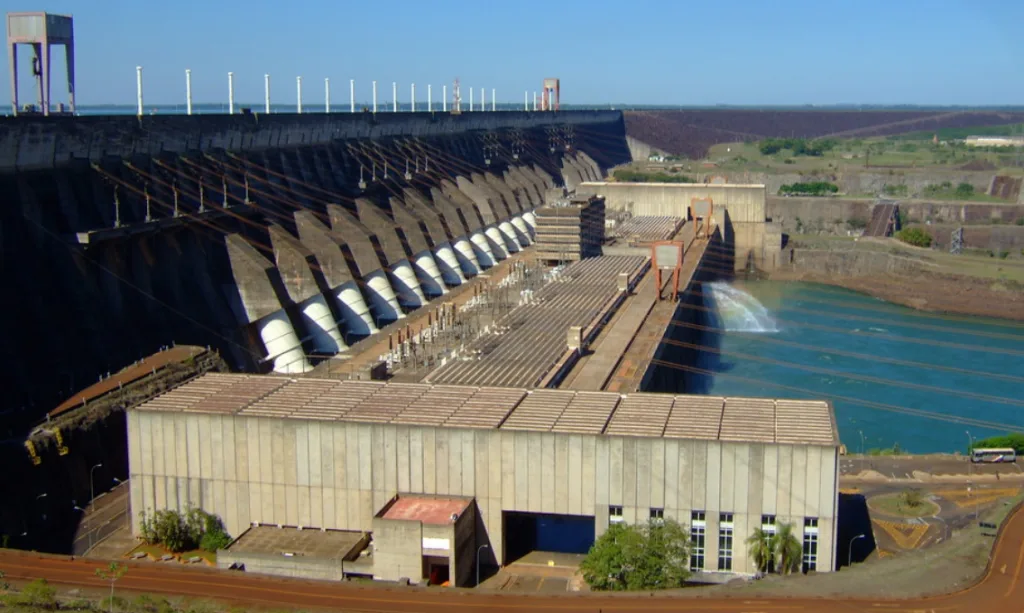
25. When building another of the 7 wonders of the modern world, the Channel Tunnel, about 8.5 times less earth, and rock were excavated and about 15 times less concrete was used.
26. To make such a monstrous dam rise, about 40,000 people were needed during its construction.
27. The construction cost of a building that was once dubbed the “most expensive building in the world,” the Marina Bay Sands in Singapore, was almost 8 times lower than the construction cost of the dam. Then again, the Itaipu Dam is one of the most expensive constructions ever realized in history.
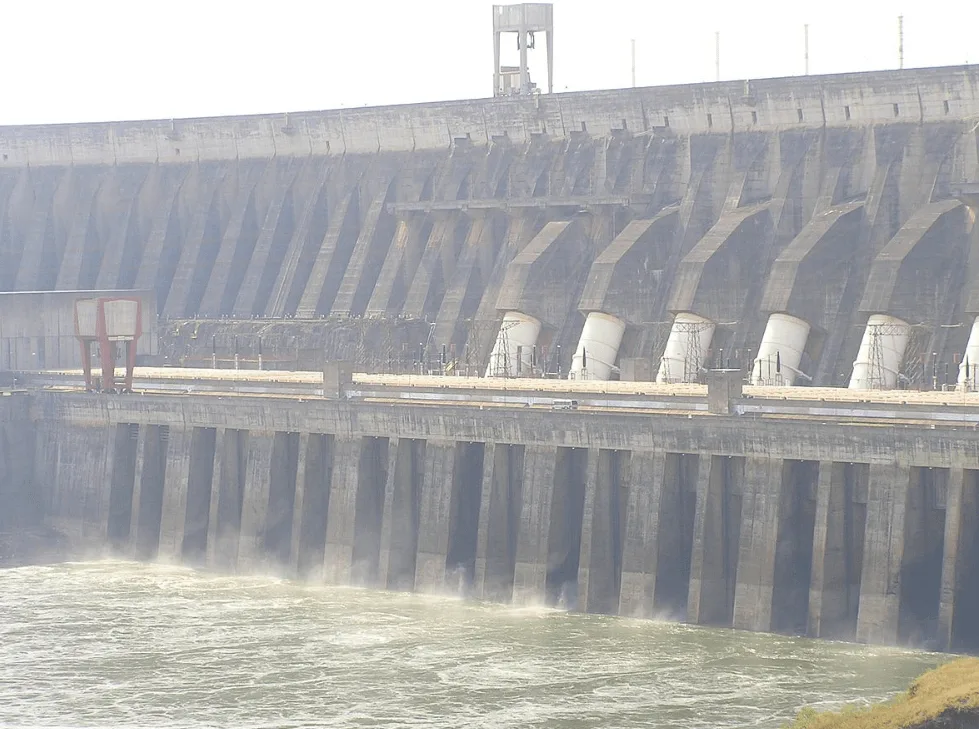

Leave a comment
You must be logged in to post a comment.